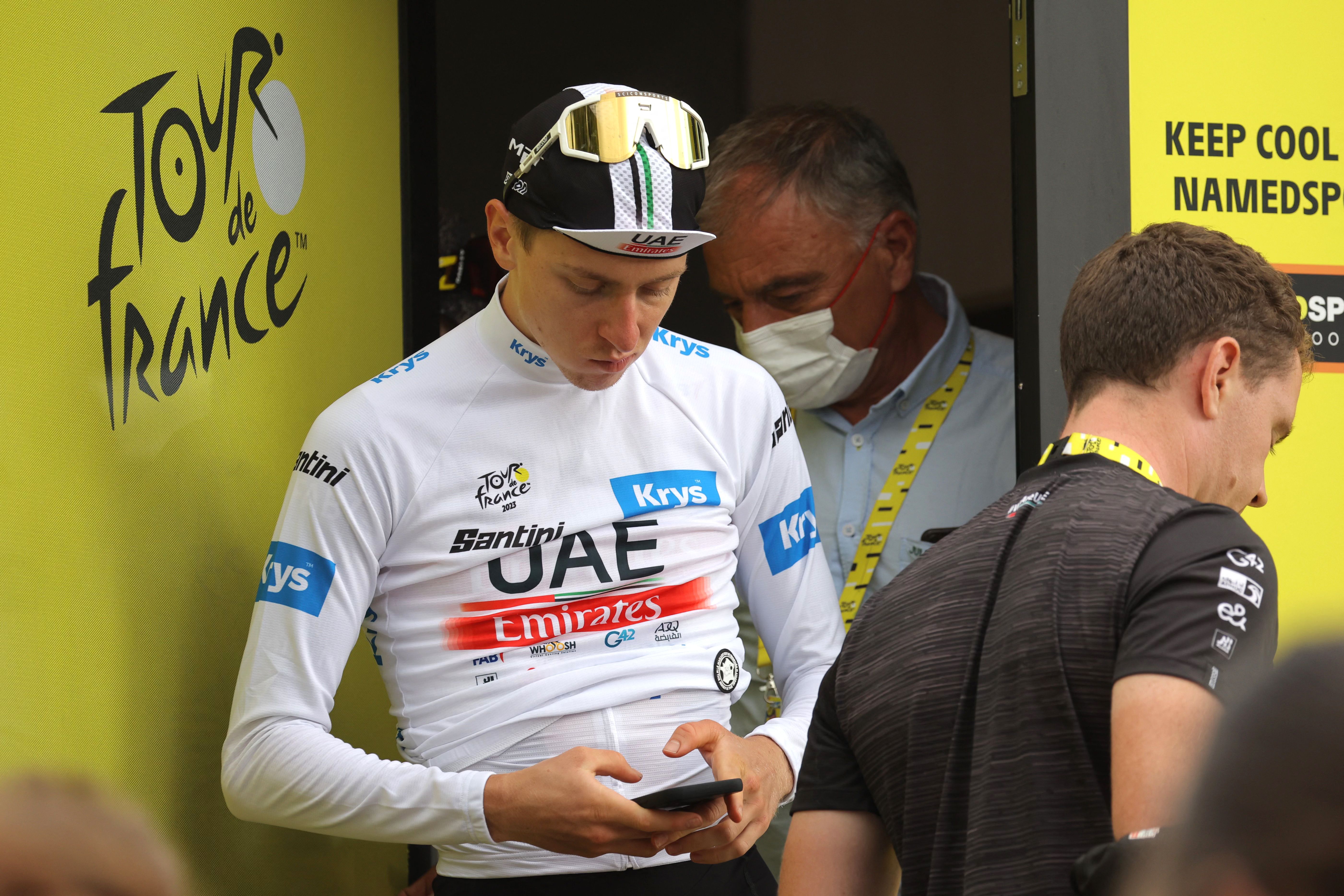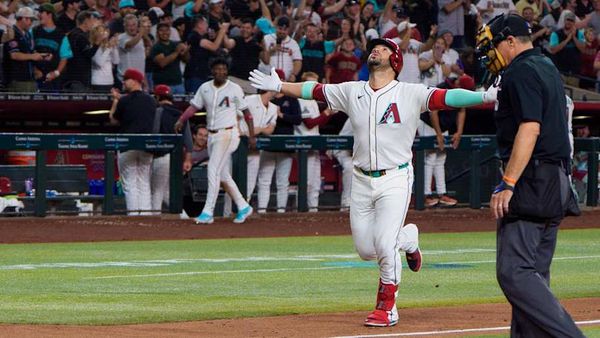
Cycling is unique in the access it grants fans to the stars of the sport. For those who attend big races, the world’s best are within touching distance as they whizz past. At race start and finish areas, fans are able to mingle with riders and staff or seek autographs around team buses. Since it hit the mainstream in around 2010, social media has extended that access, providing a further point of connection between fans, riders and teams.
Among the various platforms, Instagram offers arguably the best insight into the lives of the riders, but with limited scope for interaction. By contrast, on the platform formerly known as Twitter a cycling community has flourished. The rise of ‘Cycling Twitter’ saw the blossoming of the collective viewing experience, with split-second reactions to race situations and news giving rise to conversations with like-minded tweeters and sparking new friendships.
Beyond the racing, in-depth discussions of tactics, rider attributes and even travel arrangements have brought together a subculture of online cycling fandom. And it’s not only fans but pro riders themselves – many of whom have joined in with the fun of this thriving ecosystem, interacting in imaginative and unexpected ways.
It hasn’t been all plain sailing, however. Despite cyclists generally tending to stick together, there have been countless examples of abuse and trolling – the inherent dangers of social media persist, including misinformation, impersonation and bullying. This feature considers the impact social media has had on the relationship between fans and the riders they follow.
The entertainers
While not all riders opt to share their lives and opinions on social media, the openness and good humour of some of those who have leapt in has earned them an army of new fans.
Cycling has a few born entertainers, and Thomas de Gendt is one of them. Both on and off the bike, the Belgian breakaway specialist delighted fans with his daring escapes throughout his career – he retired at the end of last season. De Gendt’s presence on Twitter has included such highlights as his ’De Gendt GC’ battle against Aimé de Gendt (no relation) in the 2022 Giro d’Italia, which began after stage 4 when Thomas posted: “Happy days. I could move up in the GC for best de Gendt by taking advantage of @AimeDeGendt duty to stay with Girmay.” The following year at the Tour de France, de Gendt proposed the following: “On stage 13 you can win my signed jersey. All you have to do is write your name and phone number down on a [piece of] paper and put it in my back pocket while you push me up [the] Tourmalet.”
Australian rider Sarah Gigante endeared herself to a host of fans both at home and beyond with her warmth and honesty, and the likes of Jasper Philipsen, Urška Žigart, Chad Haga, Toms Skujiņš and Krista Doebel-Hickok have all maintained a presence on X, frequently engaging with fans and responding to comments.
In recent years, team and race social media accounts have stepped up their game, transcending mere information-sharing. Some have used innovative design to bring life to once-dour squad announcements, fostering engagement through a light-hearted approach, which on the whole has met with an enthusiastic response.
Memorable moments
While most riders update their Instagram or TikTok accounts more frequently, only a select few maintain a consistent presence on X, and some of the most memorable interactions have come from cameo appearances by occasional tweeters, delighting fans at unexpected moments. On Christmas Eve 2021, Luke Rowe’s appeal for a box of Christmas crackers saw the community leap to the rescue, sharing the post and quickly solving his crisis. Rowe later shared a photo of himself – in his pyjamas – alongside the generous donor.
In 2022, there was a brilliant series of self-deprecating, tongue-in-cheek posts between riders who had celebrated winning only to find out they had come second. The unofficial club, started by Alberto Bettiol as he passed the baton to Jasper Philipsen after his ill-fated celebration at the Tour de France, saw Ilan van Wilder become the next recipient, with Wout van Aert adding his condolences to the thread.
Most of the time I hate social media, but tonight it saved Christmas 🤣🎄#crackers pic.twitter.com/8ItQ5xTluVDecember 24, 2021
When a well-known account asserted that Tadej Pogačar would not be riding the 2023 Amstel Gold race, the man himself popped up to respond: “ARE YOU SURE?” to widespread amusement. He duly took part, and won.
Benji Naesen, YouTube content creator and co-host of the Lanterne Rouge podcast, believes that the beauty of X for cycling fans is its accessibility. “It gives riders a voice,” he says, “but it also opens them up to criticism” – more on which below. Naesen points out the direct connection motivates riders to show more of their character. “The more personality a rider reveals, the more the fans will engage, and the more we know the cyclists we look up to. I think that’s better for the sport.”
Fakes, mistakes and controversies
The usual limitations of social media apply even to the most seemingly mild-mannered of online communities, and despite the congeniality of the cycling sphere, there are, of course, plenty of contentious moments. EF Education-EasyPost’s Jonathan Vaughters is no stranger to a public spat, and he drew the ire of French hero Thibaut Pinot after accusing him of “cry[ing[ to the media” in 2023. When prompted by another user to tag Pinot, Vaughters joked: “Not sure he could read it through all of his tears”. Pinot came back with a pithy “Who are you?” Lance Armstrong later pitched in: “Is this the same @vaughters that did the exact same thing as his entire generation did, threw his own riders under the bus, and got off Scot free??” The pair continued to tussle over doping throughout the day.
Between fans, plenty of cross words are exchanged in the heat of the moment. Supporters of Primoz Roglič and Fred Wright clashed following a crash between the pair at the 2022 Vuelta a España. Though the platform is often used to vent frustrations, it can also offer a direct way to voice concerns. Fans rail against poor safety, providing quickly captured screengrabs of sketchy moments in races from live feeds, which can then be discussed and dissected. In some cases, they are acted upon. Vocal leader of the CPA (Cyclistes Professionnels Associés) Adam Hansen has weighed in on several safety issues, and the visibility of the platform’s content means that it’s often quicker for a rider to complain on social media than to go through official channels. Mathieu van der Poel made his feelings clear about the new chicane entry into the Trouée d’Arenberg in a post he made prior to the race in 2024: “Is this a joke?”
The Pinot vs Cepeda match continues via Vaughters. 🍿 Everything that can save us from this Giro's boredom is allowed. #Giro pic.twitter.com/zZro5v3uZ2May 21, 2023
In recent years, the opportunities offered by the online community have been somewhat tempered by the challenges. Spoof accounts can undermine the validity of official accounts, leading to the spreading of misinformation as they circulate transfer rumours and fake news. Search the name ‘Tadej Pogačar’ and you’ll find a host of impersonators, as well as at least 10 fan accounts. You can’t assume authenticity, and cycling is not immune to pretenders and charlatans claiming to have insider knowledge.
A less sinister problem, though, is mistaken identity. A user named Geraint Thomas, regularly taken for the former Tour de France winner, often posts deadpan comments in response to tweets misdirected to him. He has been unofficially adopted by the cycling fandom as a result.
Social vs traditional media
From the perspective of fans, social media providing more insights into the lives of riders and improved communication from teams may seem like a win-win. But it is a mixed blessing for traditional media, as teams can more easily control their messaging to the public. With increased levels of media training and awareness, riders may not feel free to express their opinions fully.
Social media allows riders to share stunning visuals without the need to answer searching questions from journalists – with mixed results. Recently, Demi Vollering drew support and praise when she opened up about her mental health struggles during last year’s Tour de France Femmes. Lidl-Trek’s Tao Geoghegan Hart regularly posts thoughtful takes on newsworthy issues including, most recently, the demise of Eurosport in the UK.
Lidl-Trek’s communications manager Jacob Kennison hints at the guidelines laid down to team members. “Riders are representatives of the team and its sponsors and are therefore expected to express themselves in a positive and inclusive manner,” he says. “So long as they do that, we always encourage riders to be themselves and welcome their sharing opinions either in interviews or social media.”
Why does Kennison’s team take such a proactive approach to social media? “Engaging with fans is important to us,” he says. “Sometimes we start the conversation, other times we jump in, but either way we want to build a community of fans that feel truly connected to the team. Our social media communications largely reflect our own personalities. If we are having fun making the content, then we’re confident our fans will have fun consuming it.”
Something for everyone
Subsets of fans have cohered around special interests on X, including particular riders, teams and nationalities. The Australian ‘couch peloton’ is one such example. Endorsed by TV network SBS, Twitter (as it was then) became a hub of connection for Antipodean fans as far back as 2012. The hashtag #couchpeloton allows users to connect – and comes into its own during the Tour de France with baking contests, games and other communal activities keeping them entertained during long, flat stages. A member of the community for over a decade, Mike (@bikeymikey70 on BlueSky) described the couch peloton as ‘a big online family, [a] lovely bunch of people, makes the late nights so much more enjoyable.’
On stage 13 you can win my signed jersey. All you have to do is write your name and phonenumber down on a paper and put it in my backpocket while you push me up Tourmalet.September 7, 2023
The online cycling community grew exponentially during 2020, with racing cancelled and little else to occupy a globally locked-down population. The German ‘Radsportbubble’ (cycling bubble) allowed that nation’s cycling fans to forge online bonds during the 2020 Tour de France. Later, during the Tokyo Olympics, the same fans united in communal support for German track specialist Mieke Kröger, who won a gold medal in the team pursuit.
Back in my day
The future of social media is uncertain, when it comes to cycling. Though Instagram and TikTok remain places for riders and teams to share information, with X falling out of favour due to Elon Musk’s ownership, the future of the communal social media experience is in doubt. New communities have sprung up on other platforms, the most promising of these coalescing around the remnants of Cycling Twitter on BlueSky. Despite the new platform’s potential, with a dissipating sense of social media’s importance in people’s lives, it seems unlikely that riders will follow in droves, despite the best efforts of early adopters and vocal facilitators including Kristo Jorgenson (brother of Visma-Lease A Bike’s Matteo).
The disparate nature of the post-Twitter world suggests that the heyday of the online cycling community may never be recaptured, and fans may be reliant on more passively enjoying the output from teams and riders on Instagram and TikTok in the future.. But Cycling Twitter’s Greatest Hits will always be remembered.







